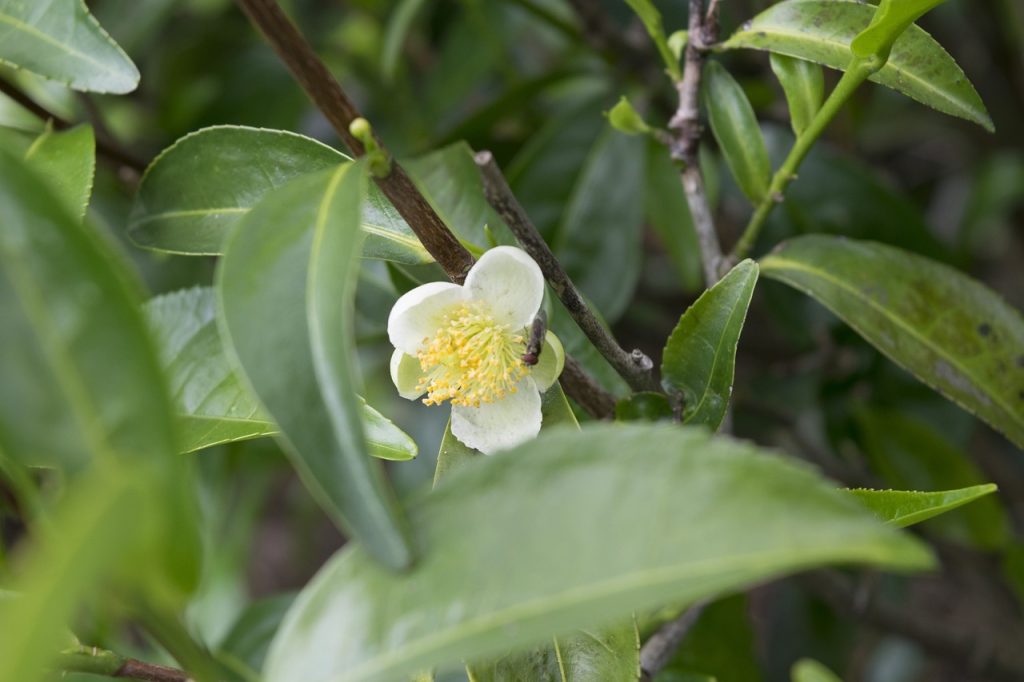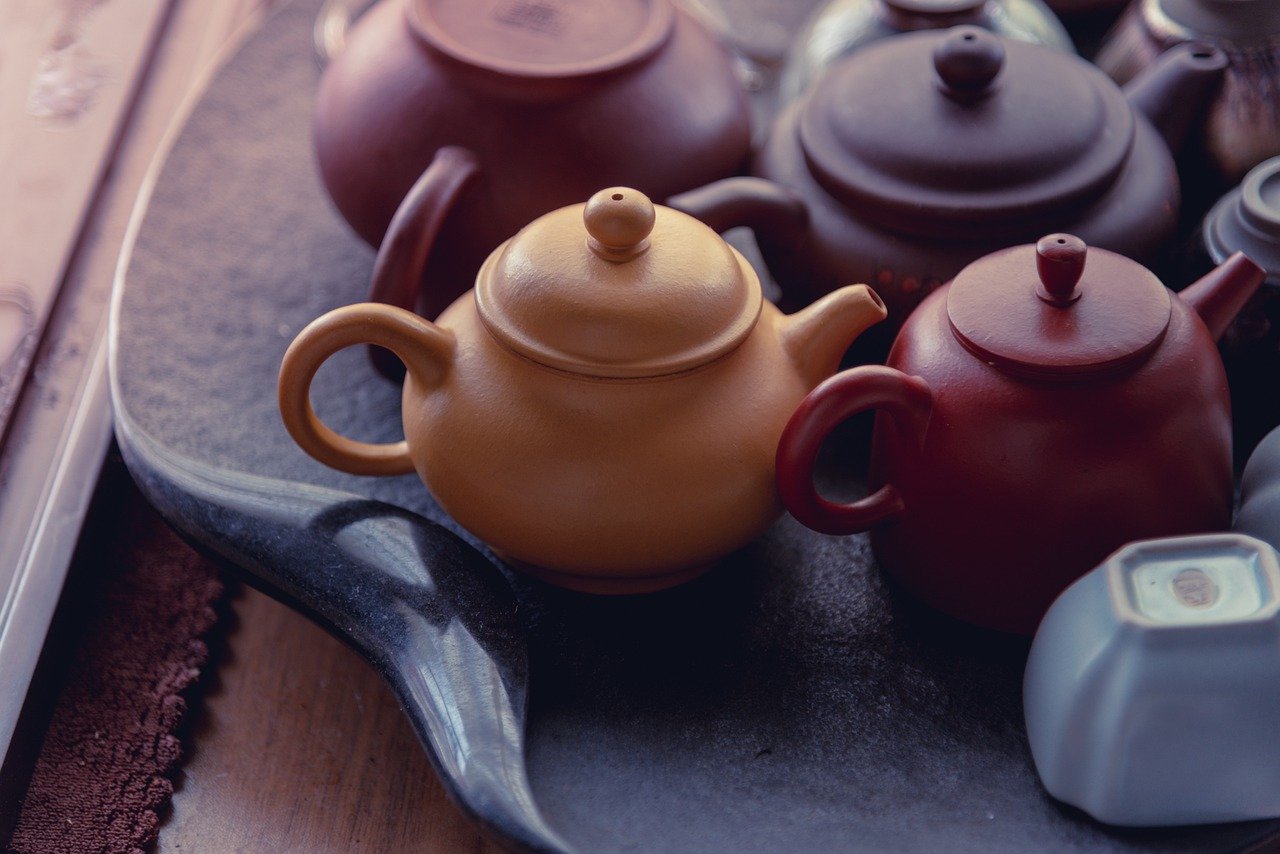Prefer podcasting? Check out Episode 1: The Green Tea Hype Explained of The Hideaway Tea Pod.
What is Tea?
If you’ve heard through the grapevine that green tea is good for you, it’s true. If not, well – green tea is good for you. The question now running through your head must be, “But how?” (which presumably is why you are here reading this). Tea, particularly green tea, is perhaps one of the greatest superfoods out there and has long enriched human life on Earth. Of the extensive list of tea’s numerous health benefits that we’ve discovered so far, some include boosting one’s immunity, preventing liver damage and diabetes, burning fat, diminishing inflammation caused by arthritis, improving oral health, reducing risk of cardiovascular disease, and aiding digestion [1]. To date, green tea is also being studied as a potential for reducing cancer risk. To rightly describe all that the world of tea has to offer would require a much more in-depth series, however in broad strokes we will simply grasp a few major historical and biological qualities of the Camellia sinensis tea plant as a humble means of scratching the surface.
The Origin Story
Sometimes, the greatest discoveries happen by accident. According to one Chinese legend, tea was serendipitously discovered by an Emperor Shen Nong around 2700 BC when some stray tea leaves had blown into a pot of boiling water. Originating from the mountainous regions of Yunnan Province of China, tea cultivation initially spread across East, South, and Southeast Asia and, over centuries, the world. Today, tea is the second most widely consumed beverage in the world (following water).
As tea consumption continued to grow, so did its surrounding culture. Particularly in China and Japan, tea consumption became closely associated with healing and medicine, peace, enjoyment, truth, and a respect for nature. Monks and appreciators of Confucianism, Taoism, and Buddhism used tea as an avenue to exhibit these philosophical concepts. Consequently, as early as the Tang Dynasty in 618AD-907AD, tea ceremonies were brought about and performed during imperial celebrations as well as during the ordinary day-to-day.
The Tea Plant
Our predecessors surely noticed tea’s positive effects on the human body as they would often use tea medicinally. Based on what we know now, they would not believe how right they were. But before zooming into the chemical composition of the tea leaf, let us first briefly overview what the tea plant actually is.

The Camellia sinensis plant is a shrub or evergreen tree with hardy, glossy green, elliptical, serrate leaves and flowers of 5-9 white petals and yellow stamens. The tea plant is heat resistant and typically grows in subtropical to tropical, elevated regions. Wild tea trees can grow up to 10-15m, however in tea farms they are usually cultivated to 0.6-1.5m to make plucking easier [2].
There are four recognized varieties under the Camellia sinensis species, however only two of them are mainly used for tea – sinensis and assamica. The remaining two, dehungensis and pubilimba, are sometimes used locally in China.
Tea Production
Before finally landing in our cups, fresh tea leaves undergo a journey, a sequence of processing techniques. These techniques vary depending on the type of tea being produced, however it is important to note that pure tea processing will only ever involve some or all of these steps:
- Heat (ex. roasting, steaming, drying)
- Pressure (ex. bruising, rolling, pressing)
- Time (ex. fermentation)
Some producers further modify their teas by incorporating oils, scents, or flavoring (ex. Earl Grey tea contains bergamot oil), however no additives, chemicals, or preservatives are involved in the processing and production of pure tea.
Here’s the Inside Scoop
The tea plant contains various bioactive components including –
- Polyphenols
- Polysaccharides
- Amino acids
- Alkaloids
- And more…
– which are all responsible for a plethora of health-improving functions. Let’s take a closer look.
Antioxidants
Think of oxidative stress as ‘damage by free radicals’. Free radicals are unstable molecules with unpaired electrons within your body. To stabilize themselves, they steal electrons from surrounding cells and essentially cause cell damage to your body. This damage can induce skin-aging, organ and tissue damage, and chronic disease (ex. cancer). Antioxidants are also unstable, however instead of stealing electrons from stable cells in your body, they steal from neighboring free radicals, subsequently stabilizing both parties.
Polyphenols are huge health-boosters because they act as antioxidants and, as previously described, combat cell damage. Polyphenols can be found in most plant foods such as vegetables, fruits, whole grains, and of course, tea.
Polyphenol content is key to determining your tea’s health benefits, astringent or bitter flavor, and color. Polyphenol content percentage varies depending on the organ, developmental stage of the plant, tea processing technique, and other factors. However, studies have generally revealed these observations [3]:
- Younger leaves contain significantly higher amounts of polyphenol content than in older leaves
- Leaves contain the highest amount of polyphenol content out of all organs
- Green tea contains the highest amount of polyphenol content when compared to other true teas
Studies show that the most abundant polyphenol in green tea, epigallocatechin 3-gallate (EGCG), has promising effects against cardiovascular disease, metabolic diseases including diabetes, chronic kidney disease, neurodegenerative disorders, and cancer. In addition to its antioxidant and anti-inflammatory properties, EGCG exhibits further anti-tumor action by enhancing cell-to-cell communication (which tumor promoters inhibit) and inducing programmed cell-death (i.e. apoptosis), a normal stage in the cell cycle that cancer cells have lost control of [4].
Polysaccharides, the second most abundant ingredient in tea (following polyphenols), play a similar role as antioxidants [5]. Polysaccharides are also known to regulate glucose and lipid levels, gut microbiota, and more, which can reduce the risk of type 2 diabetes, obesity, and other metabolic diseases.
Amino Acids and Alkaloids
In addition to polyphenols and polysaccharides, tea also contains a variety of amino acids, including the very special L-theanine (or otherwise known as theanine). L-theanine is typically found in tea and some mushrooms, but is otherwise rare in nature. Not only does L-theanine contribute to tea’s sweet umami flavor, but it is also observed to relax the mind and reduce stress. Many studies have shown that consumption of L-theanine ameliorates depression and anxiety and improves emotional and cognitive function [6]. Drinking tea is not only calming because you get to sip a hot beverage – it is literally calming!
Tea also contains various alkaloids, one of them being the popularly known caffeine. Caffeine contributes to tea’s bitter flavor and is a brain and nervous system stimulant. Multiple studies observed that caffeine in cooperation with L-theanine reduces mind-wandering and can further improve attention retention. Because of this synergistic relationship between L-theanine and caffeine, tea enables one to achieve a “meditative focus mindset” [7].
But Not Too Much!
By now, the thought of incorporating tea into your regular diet may be upon you. While the thought is golden and no less than heavenly, I offer a word of caution – like anything else, you won’t want to chug tea like some cure-all. Excessive consumption of caffeine can lead to symptoms of anxiety, insomnia, and increased blood pressure while excessive consumption of EGCG can cause liver damage. Over-drinking green tea may also interfere with iron absorption and increase the risk of bone disease. Unfortunately, there is no hard-and-fast rule for how much green tea is the perfect amount for each person, but as scary as this all sounds, rest assured that 3-5 cups of green tea per day is a perfectly healthy amount with which you can reap all of tea’s great health benefits.
The Verdict
Consuming tea and particularly green tea in moderation is not only safe but also impressively healthy for you. Tea’s extensive past reveals that tea has accompanied humanity for centuries’ worth of generations, nourishing us physically, mentally, and even spiritually. Additionally, the biological properties of tea, including antioxidants, L-theanine, and caffeine, pack a hearty health boost! The world of tea has so much to offer, and many more of the Camellia sinensis plant’s provisions still have yet to be discovered, however we can sip confidently and with great wonder, knowing that there is more to tea than meets the eye.

Closing Comments
Thank you for checking out this blog post, and I hope you learned something new! Feel free to let me know your thoughts in the comments section, what information you found most helpful, and any requests on topics you’d like to dive deeper into. Be kind to yourself, treat yourself to a quality cup of tea, and remember to keep learning!
References
- Sharangi A.B. (2009). Medicinal and therapeutic potentialities of tea (Camellia sinensis L.) – A review. Food Research International. 42(5-6), 529-539. https://doi.org/10.1016/j.foodres.2009.01.007
- Mahmood, T., Akhtar, N., & Khan B.A. (2010). The morphology, characteristics, and medicinal properties of the Camellia sinensis’ tea. Journal of Medicinal Plants Research. 4(19), 2028-2033. https://doi.org/10.5897/JMPR10.010
- Wang, C., Han, J., Pu, Y., & Wang, X. (2022). Tea (Camellia sinensis): A Reivew of Nutritional Composition, Potential Applications, and Omics Research. Applied Sciences. 12(12), 5874. https://doi.org/10.3390/app12125874
- Mokra, D., Joskova, M., & Mokry J. (2023). Therapeutic Effects of Green Tea Polyphenol (-)-Epigallocatechin-3-Gallate (EGCG) in Relation to Molecular Pathways Controlling Inflmamation, Oxidative Stress, and Apoptosis. Int J Mol Sci. 24(1). 340. https://doi.org/10.3390/ijms24010340
- Wang Q., Yang, X., Zhu, C., Liu, G., Sun, Y., & Qian, L. (2022). Advances in the Utilization of Tea Polysaccharides: Preparation, Physicochemical Properties, and Health Benefits. Polymers (Basel). 14(14), 2775. https://doi.org/10.3390/polym14142775
- Li, M.Y.,Liu, H.Y.,Wu, D.T., Kenaan, A., Geng, F., Li, H.B., Gunaratne, A., Li, H., & Gan, R.Y. (2022). L-Theanine: A Unique Functional Amino Acid in Tea (Camellia sinensis L.) With Multiple Health Benefits and Food Applications. Frontiers in Nutrition. 9, 1-12. https://doi.org/10.3389/fnut.2022.853846
- “The Insane Biology and Cultivation of Tea | Masterclass on Tea (Chapter 2)”. Youtube, uploaded by Wu Mountain Tea, 10 August 2022, https://www.youtube.com/watch?v=munJOh-19yk&list=PLeK5s_4Pb8528z06MYcc_XMfd5V7ZJmUv&index=4



